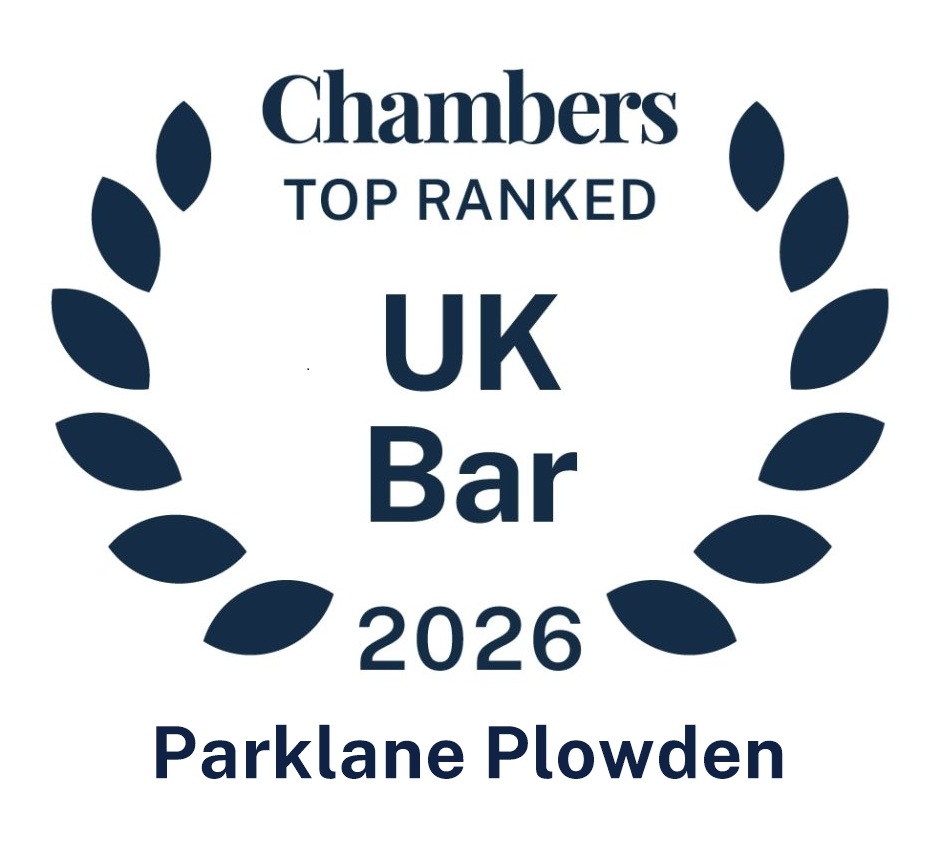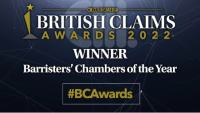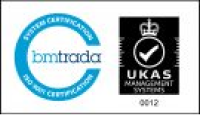<!-- wp:paragraph -->
<p><em>The Court of Appeal’s much anticipated judgment in <u>Charlotte Victoria Hassam & Anor. v. Yoann Samuel Rabot & Anor</u>.<a href="#_ftn1" id="_ftnref1"><strong>[1]</strong></a> was handed down on Friday 20 January 2023. The Court set out guidelines as to how to deal with concurrence of tariff and non-tariff injuries.</em></p>
<!-- /wp:paragraph --><!-- wp:paragraph -->
<p>Two cases were heard together on appeal: <em><u>Rabot v. Hassam</u></em> and <em><u>Briggs v. Laditan</u></em>. Both arose out of road traffic accidents. Both concerned the claimant having suffered whiplash and non-whiplash injuries.<a href="#_ftn2" id="_ftnref2">[2]</a> Whiplash injuries<a href="#_ftn3" id="_ftnref3">[3]</a> now attract a tariff award, pursuant to the Whiplash Injury Regulations 2021 as enacted by the Civil Liability Act 2018.<a href="#_ftn4" id="_ftnref4">[4]</a></p>
<!-- /wp:paragraph --><!-- wp:paragraph -->
<p><strong><em>Rabot</em></strong></p>
<!-- /wp:paragraph --><!-- wp:paragraph -->
<p>Yoann Rabot had suffered various tariff injuries including whiplash, alongside soft tissue injuries to the knees, for which no tariff applied.<a href="#_ftn5" id="_ftnref5">[5]</a> The tariff award at first instance was assessed at £1,390 and the non-tariff £2,500, totalling £3,890. Hennessy DJ, sitting in the County Court at Birkenhead, then ‘<em>stepped back</em>’ to consider whether adjustment was necessary, applying the <em>‘totality principle’</em> identified by Pitchford LJ in <em><u>Sadler v. Filipiak</u></em>.<a href="#_ftn6" id="_ftnref6">[6]</a></p>
<!-- /wp:paragraph --><!-- wp:paragraph -->
<p><em>‘It is in my judgment always necessary to stand back from the compilation of individual figures, whether assistance has been derived from comparable cases or from the JSB guideline advice, to consider whether the award for pain, suffering and loss of amenity should be greater than the sum of the parts in order properly to reflect the combined effect of all the injuries upon the injured person's recovering quality of life or, on the contrary, should be smaller than the sum of the parts in order to remove an element of double counting...’</em><a href="#_ftn7" id="_ftnref7">[7]</a></p>
<!-- /wp:paragraph --><!-- wp:paragraph -->
<p>Following this application, Rabot’s overall award was reduced to £3,100.</p>
<!-- /wp:paragraph --><!-- wp:paragraph -->
<p><strong><em>Briggs</em></strong></p>
<!-- /wp:paragraph --><!-- wp:paragraph -->
<p>Similarly, Briggs, whose claim was heard by the same judge, suffered tariff-caught soft tissue injuries, alongside elbow, knee and hip injuries for which Parliament had not prescribed a set remedy. The tariffed injuries amounted to an award of £840, with non-tariff at £3,000. Hennessy DJ, stepping back and identifying an overlap between the two sets of injuries, reduced the award by £1,040 to give a total of £2,800.</p>
<!-- /wp:paragraph --><!-- wp:paragraph -->
<p><strong>The Appeal</strong></p>
<!-- /wp:paragraph --><!-- wp:paragraph -->
<p>The question for the Court to determine was this: what approach should be taken when coming to assess a combination of tariff and non-tariff injuries where a given claim involves both?</p>
<!-- /wp:paragraph --><!-- wp:paragraph -->
<p>On that question, the Court of Appeal was divided.</p>
<!-- /wp:paragraph --><!-- wp:paragraph -->
<p>Nicola Davies LJ, with whom Stuart-Smith LJ agreed, held by majority that on interpretation of the whiplash regulations, the assessments at first instance were correct.</p>
<!-- /wp:paragraph --><!-- wp:paragraph -->
<p>At paragraph 38 of her judgment, Nicola Davies LJ set out the approach to be taken by the Court:</p>
<!-- /wp:paragraph --><!-- wp:paragraph -->
<p><em>‘It follows that the approach of the court to an assessment of damages in respect of a tariff and non-tariff award where concurrently caused PSLA is present is that the court should:</em></p>
<!-- /wp:paragraph --><!-- wp:list -->
<ul><!-- wp:list-item -->
<li><em>assess the tariff award by reference to the Regulations;</em></li>
<!-- /wp:list-item --></ul>
<!-- /wp:list --><!-- wp:list -->
<ul><!-- wp:list-item -->
<li><em>assess the award for non-tariff injuries on common law principles; and Judgment Approved by the court for handing down Rabot v Hassam; Briggs v Laditan;</em></li>
<!-- /wp:list-item --></ul>
<!-- /wp:list --><!-- wp:list -->
<ul><!-- wp:list-item -->
<li><em>“step back” in order to carry out the Sadler adjustment, recognising that the sum included in the tariff award for the whiplash component is unknown but is smaller than it would be if damages for the whiplash component had been assessed applying common law principles’</em></li>
<!-- /wp:list-item --></ul>
<!-- /wp:list --><!-- wp:paragraph -->
<p><em>‘There is one caveat, namely that the final award cannot be less than would be awarded for the non-tariff injuries if they had been the only injuries suffered by the claimant.’</em></p>
<!-- /wp:paragraph --><!-- wp:paragraph -->
<p>In essence, consider each injury as intended by statute or at common law, then step back to determine totality.</p>
<!-- /wp:paragraph --><!-- wp:paragraph -->
<p>The caveat provided is noteworthy. The total award would be no lower than what the PSLA would have been in a given case for the non-tariff injuries by themselves. In other words, a claimant cannot walk away with a lesser sum by bringing both claims together.</p>
<!-- /wp:paragraph --><!-- wp:paragraph -->
<p>Sir Geoffrey Vos MR, dissenting, determined that the parliamentary award represented full compensation for the injuries taken together. The consequence of that approach would mean the award for any non-tariff injury would only amount in a small uplift on the original sum. Stuart-Smith LJ suggested it was hard to reconcile such an application of the law with the conclusion reached:<a id="_ftnref8" href="#_ftn8">[8]</a></p>
<!-- /wp:paragraph --><!-- wp:paragraph -->
<p><em>‘The Master of the Rolls starts with an acceptance that the 2018 Act “removed certain claimants’ rights to full compensation for whiplash injuries, but not for other kinds of injury”; but he reaches the conclusion that “Parliament has legislated for the reduction of general damages for non-whiplash personal injuries in cases where whiplash injuries have been sustained, even though the statute does not appear specifically to be directed at non-whiplash cases.” (My emphasis). There is an obvious tension between these two statements. Since it is accepted that the 2018 Act does not remove any claimants’ rights to full compensation for other kinds of injury, the conclusion can only be supported if the terms of the statute effect the change by necessary implication and the consequential alteration to the common law was necessary and no more than necessary: see Lachaux at [13], cited by Nicola Davies LJ above.’</em></p>
<!-- /wp:paragraph --><!-- wp:paragraph -->
<p><strong>Comment</strong></p>
<!-- /wp:paragraph --><!-- wp:paragraph -->
<p>The dissenting view mirrors the approach taken by many insurance companies when defending such claims. Following <em>Rabot</em>, insurers are likely to review their position. </p>
<!-- /wp:paragraph --><!-- wp:paragraph -->
<p>Courts across the country now have a methodology upon which to value these claims. But is that the final word on the subject? We await to see whether leave to appeal will be sought to take the matter up to the Supreme Court in due course.</p>
<!-- /wp:paragraph --><!-- wp:paragraph -->
<p>The full judgment can be found <a href="https://caselaw.nationalarchives.gov.uk/ewca/civ/2023/19">here</a>.</p>
<!-- /wp:paragraph --><!-- wp:paragraph -->
<p>The tariffs found within the Whiplash Injury Regulations 2021 can be found <a href="https://www.legislation.gov.uk/uksi/2021/642/regulation/2/made">here</a>.</p>
<!-- /wp:paragraph --><!-- wp:paragraph -->
<p><a href="https://www.parklaneplowden.co.uk/our-barristers/bharat-jangra/">Bharat Jangra</a>, called 2019, is a junior member of the civil and employment teams in Chambers. He is regularly instructed in representing parties at hearings in relation to assessment of quantum and in drafting advices on quantum.</p>
<!-- /wp:paragraph --><!-- wp:paragraph -->
<p><a href="https://www.parklaneplowden.co.uk/our-barristers/robert-allen-pupil/">Robert Allen</a> is a pupil in Chambers currently under the supervision of <a href="https://www.parklaneplowden.co.uk/our-barristers/jim-hester/">Jim Hester</a>. He will be accepting instructions in second six from 3 April 2023.</p>
<!-- /wp:paragraph --><!-- wp:separator -->
<hr class="wp-block-separator has-alpha-channel-opacity"/>
<!-- /wp:separator --><!-- wp:paragraph -->
<p><a href="#_ftnref1" id="_ftn1">[1]</a> [2023] EWCA Civ 19</p>
<!-- /wp:paragraph --><!-- wp:paragraph -->
<p><a href="#_ftnref2" id="_ftn2">[2]</a> Para 2 ibid</p>
<!-- /wp:paragraph --><!-- wp:paragraph -->
<p><a href="#_ftnref3" id="_ftn3">[3]</a> So long as they do not exceed, or are not likely to exceed, two years – Section 3(1)(b)(i) Civil Liability Act 2018</p>
<!-- /wp:paragraph --><!-- wp:paragraph -->
<p><a href="#_ftnref4" id="_ftn4">[4]</a> Section 3</p>
<!-- /wp:paragraph --><!-- wp:paragraph -->
<p><a href="#_ftnref5" id="_ftn5">[5]</a> In quantifying PSLA for non-tariff injuries, the common law principles apply – see <em>Attorney General of St Helena v. AB</em> [2020] UKPC 1.</p>
<!-- /wp:paragraph --><!-- wp:paragraph -->
<p><a href="#_ftnref6" id="_ftn6">[6]</a> [2011] EWCA Civ 1728</p>
<!-- /wp:paragraph --><!-- wp:paragraph -->
<p><a href="#_ftnref7" id="_ftn7">[7]</a> Para 34 ibid</p>
<!-- /wp:paragraph --><!-- wp:paragraph -->
<p><a href="#_ftnref8" id="_ftn8">[8]</a> Para 43 ibid</p>
<!-- /wp:paragraph -->







